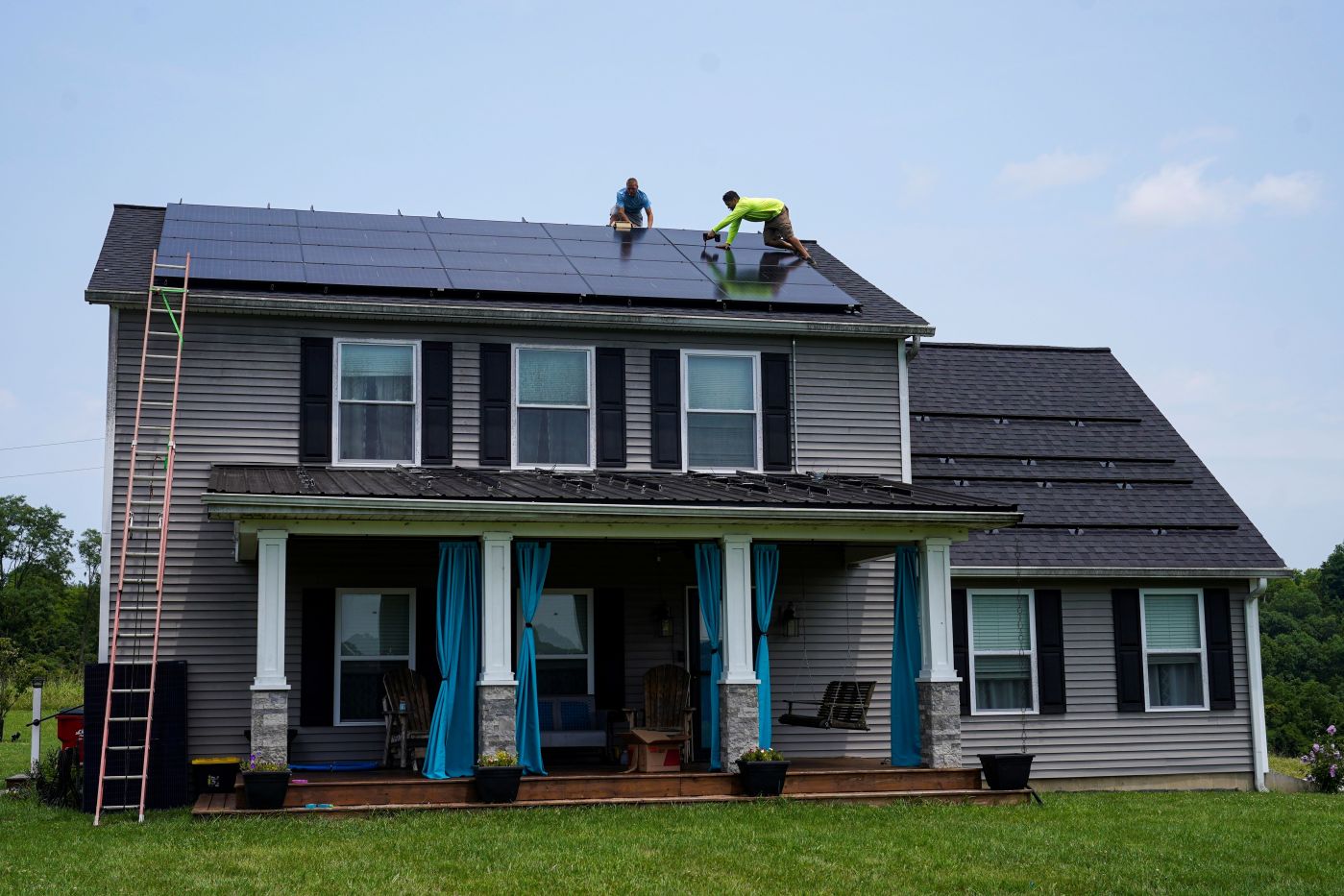
Gaskin: Income disparity a stumbling block in going green
The battle to fight climate change and achieve net zero carbon emissions means moving people from brown to green, clean energy. One problem with this is the upfront costs and the often higher energy barrier. Lower-income communities won’t be able to make the transition without rate reform as their energy burden is so much higher than those in wealthier communities. Not addressing the energy burden will lead to an energy divide.
To date, low-income and disadvantaged households have been left behind in the rapid deployment of residential distributed solar generation, despite the benefits that this technology can provide to these communities. According to data from the U.S. Department of Energy’s Low-Income Energy Affordability Tool, the national average energy burden for low-income households is 8.6%, three times higher than the energy burden for non-low-income households, and, in some cases, can be as high as 30%.
The American Council for an Energy-Efficient Economy, a nonprofit research organization, reported in its 2020 study the median energy burden of:
Black households is 43% higher than that of white (non-Hispanic) households.
Hispanic households is 20% higher than that of white (non-Hispanic) households.
Native American households is 45% higher than that of white (non-Hispanic) households.
They found the same patterns of inequality play out nationally, regionally, and across all metro areas in their study. According to ACEEE, high energy burdens are correlated with a greater risk for respiratory diseases, increased stress and economic hardship, and difficulty in moving out of poverty.
Despite the significant opportunity for lower-cost electricity generation and the falling cost of solar PV systems in recent years, low-income households have not benefited from solar equally. DOE’s Solar Futures Study found that only 31% of residential solar adopters are households that earned less than the area median income. There are numerous barriers to low-income and disadvantaged communities adopting residential distributed solar energy. The barriers are financial as well as non-financial such as community engagement, site suitability, and policy and regulatory. Investing in solar energy and project-deployment services to enable residential distributed solar projects for low-income and disadvantaged households will expand access to the benefits of clean energy — benefits that include household savings, energy resilience, improved air quality, wealth building, and quality jobs.
Without significant intervention, affluent communities will run on clean, green energy and benefit from environmental improvements, while poorer neighborhoods will be left behind in the brown, legacy, and fossil fuel systems.
In 2020, Greg King of TSK Energy Solutions and a team of graduate students from Northeastern University created the Environmental Justice and Energy Burden in Massachusetts tool, so the energy burden disparity can be seen across the state.
One of the primary goals of the transition away from fossil fuels to renewable sources should be to reduce the energy burden. However, the current cost of equipment and installation makes it more likely that the transition to all-electric heating and cooling will increase the homeowner’s energy burden and not decrease it. Where energy burdens are low, as in wealthy neighborhoods, this is not much of a factor in a family’s decision-making. In low-income communities, this is a big factor because any increase in energy burden beyond what they’re already paying is punitive. At the core of the energy system transition is the need to move from fossil fuels to renewable clean energy sources such as solar, wind, geothermal and hydrogen. There are substantial capital outlays for most homes to replace their existing heating, cooling, and cooking systems with all-electric systems.
The current reality is that wealthier communities are making the transition rapidly while low-income communities are paralyzed. Making matters worse as more and more customers move to all electric heating, cooling, and cooking, the families that are unable to afford the capital outlay to make the transition are stuck with a stranded gas system that will become increasingly more expensive per household. In addition, the transition to all-electric heating, cooking, and cooling puts upward pressure on electric rates, thus creating another energy burden challenge.
To address the increased pressure on rates as more consumers transition to all-electric systems there is a need for utility rate reform. Residential utility rates are not very transparent. Consumers pay for energy not recognizing that the utility bill includes the cost to generate and distribute energy but also the cost of energy efficiency and solar programs where incentives are offered to consumers to switch. Many lower-income residents can’t or don’t take advantage of these incentives and in a reverse Robin Hood manner, subsidize the rich who can with the portion of their rate that goes toward incentives. These incentives are offered in the form of a rebate, meaning you have to first go out of pocket before you can qualify to receive the rebate. The bottom line is as we transition to all-electric systems there is also a need for us to modernize the rate-making process to make it more transparent and to create new rate classes that enable low-income families to pay a fairer price for the electricity they consume.
Rate structures based on residents’ ability to pay and income levels is something California will try. Brian McCowan of ERS explains it this way: The standard U.S. model for residential electric rates is to bill customers for consumption (volumetric rate) along with a fixed rate(s) for sharing the cost of maintaining the distribution network. Within customer classes, each customer is billed the same volumetric and fixed rates regardless of income level. Although some utilities offer subsidies for low-income households, the new California rate structure will replace a portion of the volumetric energy costs with a monthly fee based on customer income levels. The model is equivalent to a graduated income tax and would lower energy costs for lower-income residents while raising rates for those with higher incomes.
Critics of the proposed rate structures claim that although lower-income residents may be able to better afford to electrify their homes and vehicles, natural energy conservation based on cost may suffer, as well as investment in residential solar and battery storage, as the financial incentive is reduced. In addition, they claim, previous investors in solar will be unfairly treated. At last report, it looks like the California lawmakers are trying to change their minds on the new proposed electric rate rule based on customer income.
We must take action now to lower the energy burden, in terms of both upfront required investments and energy cost as a percentage of income to help ease the transition from brown to green energy systems.
Ed Gaskin is Executive Director of Greater Grove Hall Main Streets and founder of Sunday Celebrations.


